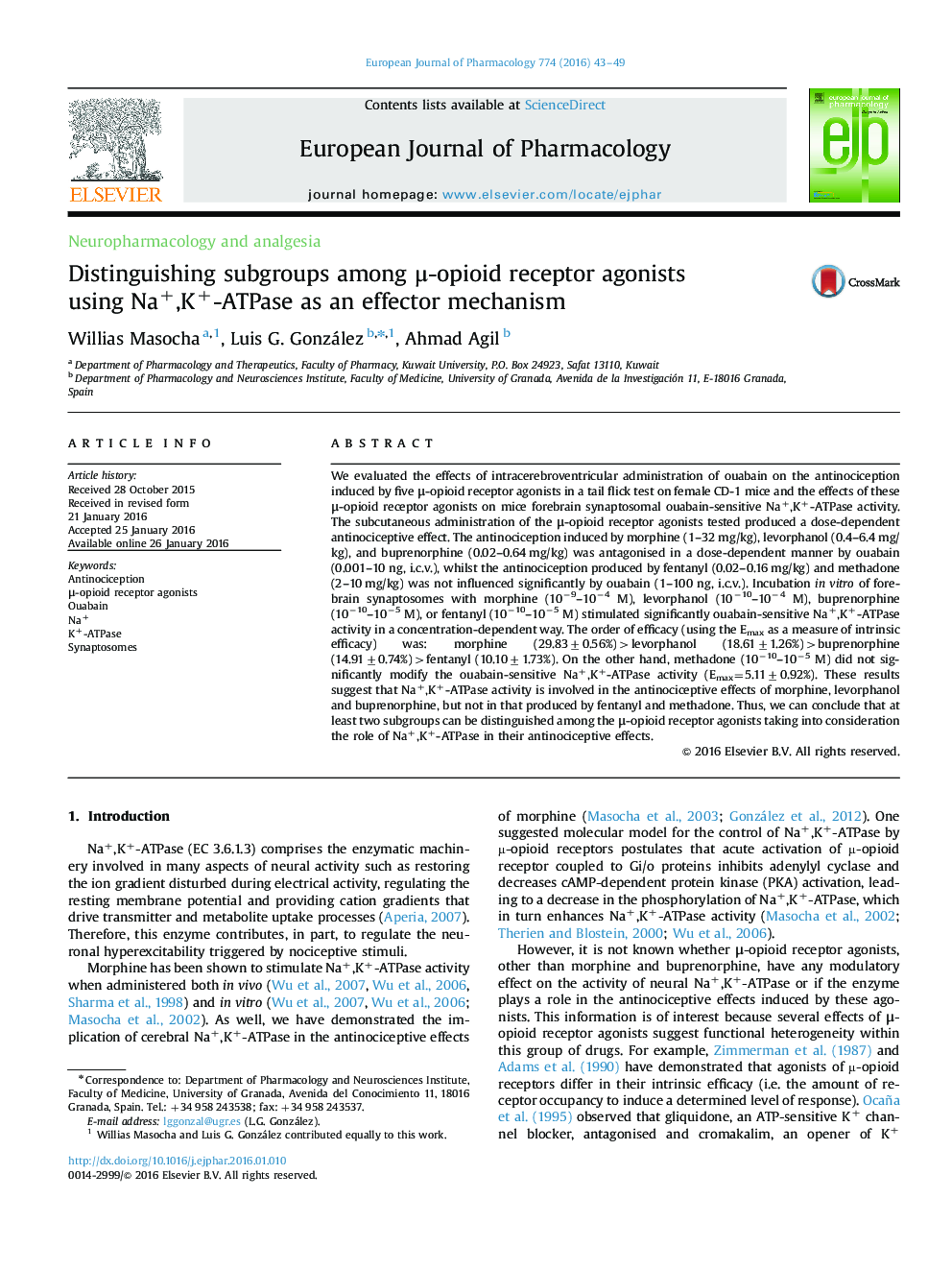| Article ID | Journal | Published Year | Pages | File Type |
|---|---|---|---|---|
| 2531129 | European Journal of Pharmacology | 2016 | 7 Pages |
We evaluated the effects of intracerebroventricular administration of ouabain on the antinociception induced by five μ-opioid receptor agonists in a tail flick test on female CD-1 mice and the effects of these μ-opioid receptor agonists on mice forebrain synaptosomal ouabain-sensitive Na+,K+-ATPase activity. The subcutaneous administration of the μ-opioid receptor agonists tested produced a dose-dependent antinociceptive effect. The antinociception induced by morphine (1–32 mg/kg), levorphanol (0.4–6.4 mg/kg), and buprenorphine (0.02–0.64 mg/kg) was antagonised in a dose-dependent manner by ouabain (0.001–10 ng, i.c.v.), whilst the antinociception produced by fentanyl (0.02–0.16 mg/kg) and methadone (2–10 mg/kg) was not influenced significantly by ouabain (1–100 ng, i.c.v.). Incubation in vitro of forebrain synaptosomes with morphine (10−9–10−4 M), levorphanol (10−10–10−4 M), buprenorphine (10−10–10−5 M), or fentanyl (10−10–10−5 M) stimulated significantly ouabain-sensitive Na+,K+-ATPase activity in a concentration-dependent way. The order of efficacy (using the Emax as a measure of intrinsic efficacy) was: morphine (29.83±0.56%)>levorphanol (18.61±1.26%)>buprenorphine (14.91±0.74%)>fentanyl (10.10±1.73%). On the other hand, methadone (10−10–10−5 M) did not significantly modify the ouabain-sensitive Na+,K+-ATPase activity (Emax=5.11±0.92%). These results suggest that Na+,K+-ATPase activity is involved in the antinociceptive effects of morphine, levorphanol and buprenorphine, but not in that produced by fentanyl and methadone. Thus, we can conclude that at least two subgroups can be distinguished among the μ-opioid receptor agonists taking into consideration the role of Na+,K+-ATPase in their antinociceptive effects.
